
How to choose an AV receiver
Contents
AV receiver (A/V-receiver, English AV receiver – audio-video receiver) is perhaps the most complex and multifunctional home theater component of all possible. It can be said that this is the very heart of the home theater. The AV receiver occupies a central position in the system between the source (DVD or Blu-Ray player, computer, media server, etc.) and a set of surround sound systems (usually 5-7 speakers and 1-2 subwoofers). In most cases, even the video signal from the source is transmitted to the TV or projector via the AV receiver. As you can see, if there is no receiver in the home theater, none of its components will be able to interact with others, and the viewing could not take place.
In fact, an AV receiver is several different devices combined in one package. It is the switching center of the entire home theater system. It is to the AV receiver that all other components of the system are connected. The AV receiver receives, processes (decodes), amplifies and redistributes audio and video signals between the rest of the system components. In addition, as a small bonus, most receivers have a built-in tuner for receiving radio stations. In total, a switcher, decoder , digital-to-analog converter, preamplifier, power amplifier, radio tuner are combined in one component .
In this article, the experts of the store “Student” will tell you how to choose the AV receiver that you need, and not overpay at the same time.
Inputs
You need to correctly calculate the number of inputs that you will need. Your needs certainly won’t be as huge as some advanced gamer with hundreds of retro game consoles, but you’ll be surprised how quickly you’ll find use for all of these inputs, so always buy a model with a spare for the future.
To get started , make a list of all the equipment that you are going to connect to the receiver and indicate the types of connections they require:
– Component audio and video (5 RCA plugs) –
SCART (found mostly on European equipment)
or just one 3.5mm jack)
– Composite audio and video (3x RCA – Red/White/Yellow)
– TOSLINK optical audio
Most receivers will be able to run one or two pieces of legacy equipment; the main figure you’ll find relates to the number of HDMI inputs.
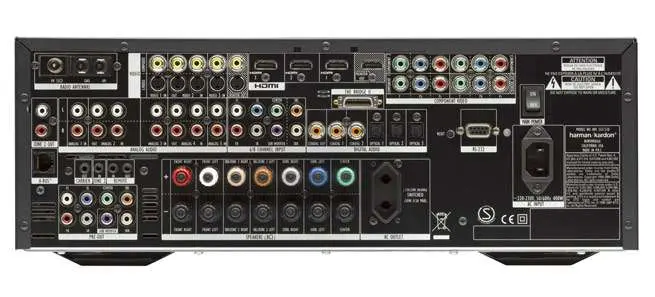
Amplifier power
Receivers with enhanced functionality are more expensive, but the main advantage of more expensive receivers is increased sound power . An excellent headroom amplifier will naturally raise the volume of complex audio passages without causing audible distortion. Although it is sometimes difficult to determine the really necessary power requirement. It all depends not only on the size of the room and the efficiency of the acoustic systems converting electrical energy into sound pressure. The fact is that you need to take into account the different approaches used by manufacturers in assessing power and units of measurement in order to compare receivers objectively. For example, there are two receivers, and both have a declared rated power of 100 watts .per channel, with a coefficient of non-linear distortion of 0.1% when working on 8-ohm stereo speakers. But one of them may not meet these requirements at high volume, when you need to play a complex multi-channel fragment of a musical recording. At the same time, some receivers will “choke” and reduce the output power on all channels at once, or even temporarily turn off to avoid overheating and potential failure.
The power of the AV receiver a must be taken into account in three cases:
1. When choosing a room for a cinema . The larger the room, the more power is needed for its full scoring.
2. When acoustic processing of the room under the cinema. The more muffled the room, the more power is required to sound it.
3. When choosing surround speakers . The higher the sensitivity, the less power the AV receiver requires . Each increase in sensitivity by 3dB halves the amount of power needed by the AV receiver to achieve the same volume. The impedance or impedance of the speaker system (4, 6 or 8 ohms) is also very important. The lower the speaker impedance, the more difficult the load for the AV receiverand it is, as it requires more current for a full sound. Some amplifiers are not capable of delivering high current for a long time, therefore they are not able to work with low-impedance acoustics (4 ohms). As a rule, the minimum allowable speaker impedance for the receiver is indicated in its passport or on the rear panel.
If you ignore the manufacturer’s recommendations and connect speakers with an impedance below the minimum allowable, then during long work this can lead to overheating and failure of the AV receiver itself . So be careful when choosing a mutual speaker and receiver, pay close attention to their compatibility or leave it to us, the specialists of the HIFI PROFI salon.
Testing on a test bench helps to identify such shortcomings in amplifiers. The most serious tests become real torture for the amplifier. Amplifiers can rarely meet such loads when reproducing real sound. But the ability of the amplifier to deliver simultaneously on all channels the power specified in the technical specifications will confirm the reliability of the power source and the ability of the receiver to drive your speaker system throughout the entire dynamic range e, from a deafening roar to a barely audible whisper.
THX -certified receivers, when paired with THX – certified speakers, will deliver the volume you need in the room they are designed to fit.
Channels
There are a number of sound settings for speakers: 5.1, 6.1, 7.1, 9.1 and 11.1. “.1” refers to the subwoofer, which is responsible for the bass; you can even find “.2” which means support for two subwoofers. The 5.1 audio setting is more than adequate for the average living room , but some Blu-ray movies require the 7.1 setting if you want the best quality.
How many amplification channels and audio speakers do you need? Many experts agree that a 5.1 channel configuration is enough to create an impressive home theater system. It includes front left, center and right speakers, as well as a pair of rear sound sources, ideally placed along the side walls and slightly behind the main seating areas. A separate subwoofer allows for fairly arbitrary placement. Until recently, there were few music recordings and film soundtracks with support for seven channels, which made 7.1 channel systems of little use. Modern Blu-ray Disc Recordings Already Offer High-Resolution Digital Audiowith support for 7.1 channel soundtracks. However, 5.1 channel speaker expansion should not be considered a requirement today, although today only the cheapest receivers have less than seven channels of amplification. These two extra channels can be used to connect rear speakers, but most receivers can be configured to feed through them in second room stereo .
In addition to 7-channel receivers, there can be 9 or even 11-channel (with linear amplifier outputs), which will allow you to add front height speakers and additional soundstage widths. Having received, thus, an artificial expansion of 5.1 channel soundtracks. However, without appropriate multi-channel soundtracks, the feasibility of artificially adding channels remains debatable.
Digital to Analog Converter (DAC)
An important role in choosing an AV receiver is played by an audio DAC , characterized by a sampling rate, the value of which is indicated in the main characteristics of the AV receiver. The larger its value, the better. The latest and most expensive models have a digital-to-analogue converter with a sampling rate of 192 kHz and higher. DACs are responsible for converting sound in AV receivers and have a bit depth of 24 bits with a sampling rate of at least 96 kHz, while expensive models often have frequencies of 192 and 256 kHz – this provides the highest sound quality. If you plan to play SACD or DVD-Audio discs at maximum settings, choose models with a sample rate offrom 192 kHz . By comparison, conventional home theater AV receivers have only a 96 kHz DAC . There are situations in the formation of a home multimedia system when the DAC of an expensive SACD or DVD player provides a higher sound quality than the DAC built into the receiver: in this case it also makes sense to use an analog rather than a digital connection.
The main decoders, and how they differ from each other
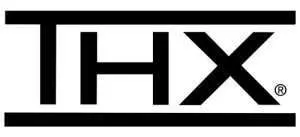
THX is a set of requirements for a multi-channel cinema sound system developed by LucasFilm Ltd. The ultimate goal is to fully harmonize the monitor systems of the sound engineer and home / cinema complexes, that is, the sound in the studio should not differ from the sound in the cinema / at home.
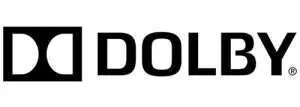
Dolby Surround is an analogue of Dolby Stereo for home theaters. Dolby Surround decoders work similarly to Dolby Stereo decoders. The difference is that the three main channels do not use the noise reduction system. When a Dolby Stereo dubbed movie is dubbed onto a video cassette or video disc, the sound is the same as in a movie theatre. The media stores information about the spatial sound in an encoded form, for its playback it is necessary to use a Dolby Surround decoder , which can highlight the sound of additional channels. The Dolby Surround system exists in two versions: simplified (Dolby Surround) and more advanced (Dolby Surround Pro-Logic).
Dolby Pro-Logic – Dolby Pro-Logic is an advanced version of Dolby Surround. On media, sound information is recorded on two tracks. The Dolby Pro-Logic processor receives a signal from a VCR or video disc player and selects two more channels from two channels: center and rear. The central channel is designed to play dialogs and link them to the video image. At the same time, at any point in the room, the illusion is created that the dialogues are coming from the screen. For the rear channel, two speakers are used, to which the same signal is fed, this scheme allows you to cover more space behind the listener.
Dolby Pro Logic II is a surround decoder , an enhancement of Dolby Pro Logic. The main function of the decoder is to decompose two-channel stereo sound into a 5.1-channel system in order to reproduce surround sound with a quality comparable to Dolby Digital 5.1, which was not achievable with conventional Dolby Pro-Logic. According to the company, a full decomposition of two channels into five and the creation of real surround sound is possible only due to the special component of two-channel recordings, designed to increase the volume of sound already on the disc. Dolby Pro Logic II picks it up and uses it to decompose the two audio channels into five.
Dolby Pro Logic IIx – the main idea is to increase the number of channels from 2 (in stereo) and 5.1 to 6.1 or 7.1. Additional channels sound the rear effects and are located in the same plane with the rest of the speakers (one of the main differences from Dolby Pro Logic IIz, where additional speakers are installed above the rest). According to the company, the format provides a perfect and seamless sound. Decoderhas several special settings: movies, music and games. The number of channels and playback quality, according to the company, is as close as possible to the real sound when recording sound tracks in the studio. In game mode, the sound is maximally tuned to reproduce all effects. In music mode, you can customize the sound to suit your tastes. Adjustment lends itself to the balance of the sound of the center and front speakers, as well as the depth and degree of surround sound, depending on the listening environment.
Dolby Pro Logic IIz is a decoder with a fundamentally new approach to spatial sound. The main task is to expand spatial effects not in width, but in height. The decoder analyzes the audio data and extracts an additional two front channels, located above the main ones (additional speakers will be required). So the Dolby Pro Logic IIz decoder turns a 5.1 system into 7.1 and a 7.1 into 9.1. According to the company, this increases the naturalness of the sound, since in a natural environment, sound comes not only from the horizontal plane, but also vertically.
Dolby Digital (Dolby AC-3) is a digital information compression system developed by Dolby Laboratories. Allows you to encode multi-channel audio as an audio track on DVD. Variations in the DD format are expressed by a numerical index. The first digit indicates the number of full bandwidth channels, the second indicates the presence of a separate channel for the subwoofer. So 1.0 is mono, 2.0 is stereo, and 5.1 is 5 channels plus a subwoofer. To convert a Dolby Digital audio track to multi-channel audio, your DVD player or receiver requires a Dolby Digital decoder . It is currently the most common decoder of all possible.
Dolby Digital EX is a version of the Dolby Digital 5.1 system that provides an additional surround sound effect due to the additional rear center channel that must be contained in the recording, playback is carried out both through one speaker in 6.1 systems, and through two speakers for 7.1 systems.
Dolby Digital Live is designed to help you enjoy audio from your computer or game console through your home theater with Dolby® Digital Live. Real-time encoding technology, Dolby Digital Live converts any Dolby Digital and mpeg audio signal for playback through your home theater system. With it, a computer or game console can be connected to your AV receiver via a single digital connection, without the hassle of multiple cables.
Dolby Surround 7.1 – differs from other decoders by the presence of additional two discrete rear channels. Unlike Dolby Pro Logic II, where additional channels are allocated (synthesized) by the processor itself, Dolby Surround 7.1 works with discrete tracks specially recorded on disk. According to the company, additional surround channels significantly increase the realism of the soundtrack and determine the position of the effects in space much more accurately. Instead of two, four surround sound zones are now available: the Left Surround and Right Surround zones are complemented by the Back Surround Left and Back Surround Right zones. This improved the transmission of the direction in which the sound changes when panning.
Dolby TrueHD is the latest format from Dolby designed specifically for dubbing Blu-ray discs. Supports up to 7.1 channel surround playback. Uses the minimum signal compression, which ensures its further lossless decompression (100% compliance with the original recording at the film studio). Able to offer support for more than 16 channels of audio recording. According to the company, this format was created with a large reserve for the future, ensuring its relevance for many years to come.
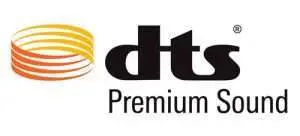
DTS (Digital Theater System) – This system is a competitor to Dolby Digital. DTS uses less data compression and is therefore superior in sound quality to Dolby Digital.
DTS Digital Surround is the most common 5.1 channel decoder . It is a direct competitor to Dolby Digital. For other DTS formats, it is the basis. All other variations of DTS decoders, except the latest ones, are nothing more than an improved version of DTS Digital Surround. This is the reason that each subsequent DTS decoder is able to decode all previous ones.
DTS Surround Sensation is a truly revolutionary system designed to help those who have only two speakers instead of a 5.1 system to immerse themselves in surround sound. The essence of DTS Surround Sensation lies in the 5.1 translation; 6.1; and 7.1 systems into normal stereo sound, but in such a way that when the number of channels is reduced, spatial surround sound is preserved. Fans of watching movies with headphones will really like this decoder .
DTS-Matrix is a six-channel surround sound format developed by DTS. It has a “rear center”, the signal for which is encoded (mixed) into the usual “rear”. It is the same as DTS ES 6.1 Matrix, just the spelling of the name is different for convenience.
DTS NEO:6 is a direct competitor to Dolby Pro Logic II, capable of decomposing a two-channel signal into 5.1 and 6.1 channels.
DTS ES 6.1 Matrix – decoders that allow you to receive a multi-channel signal in 6.1 format. The information for the center rear channel is mixed into the rear channels and is obtained in a matrix way during decoding. Center-rear is a virtual channel and is formed using two rear speakers when an identical signal is fed to them.
DTS ES 6.1 Discrete is the only 6.1 system that provides completely separate center-rear effects that are transmitted via a digital channel. This requires an appropriate decoder . Here center-rear is a real speaker placed behind you.
DTS 96/24 is an improved version of DTS Digital Surround that allows you to receive a multi-channel signal in 5.1 format with the parameters of DVD-audio discs – 96 kHz sampling, 24 bits .
DTS HD Master Audio is the latest format supporting 7.1 channel audio and absolutely lossless signal compression. According to the manufacturer, the quality is fully consistent with the studio bit by bit . The beauty of the format is that this decoder is compatible with all other DTS decoders without exception .
DTS HD Master Audio Essential is the same as DTS HD Master Audio but is not compatible with other formats such as DTS | 96/24, DTS | ES, ES Matrix, and DTS Neo: 6
DTS – HD High Resolution Audio is a lossy extension of conventional DTS that also supports 8 (7.1) channels 24bit /96kHz and is used when there is not enough space on the disc for Master Audio tracks.
Scale
Most modern AV receivers process incoming analog and digital video signals, including 3D video. This feature will be important if you are going to play 3D content from devices connected to your receiver, don’t forget about the HDMI version supported by your devices. Now the receivers have the ability to switch HDMI 2.0 with support for 3D and 4K resolution (Ultra HD ), a powerful video processor that can not only convert video from analog inputs to digital form, but also scale the image up to 4K. This feature is called upscaling (eng. Upscaling – literally “scaling”) – this is the adaptation of low-resolution video to high-resolution screens.
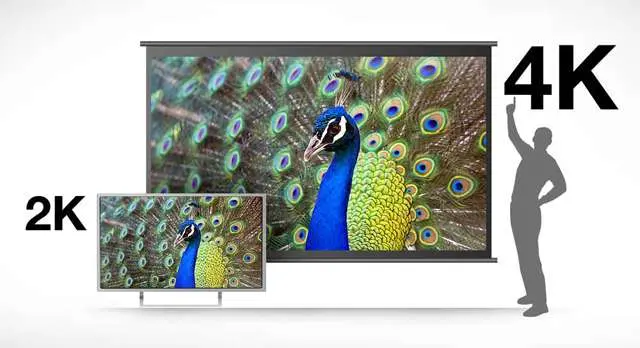
How to choose an AV receiver
Examples of AV receivers
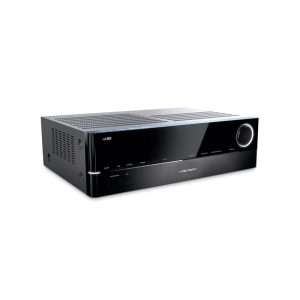 Harman Kardon AVR 161S |  Harman Kardon BDS 580 WQ |
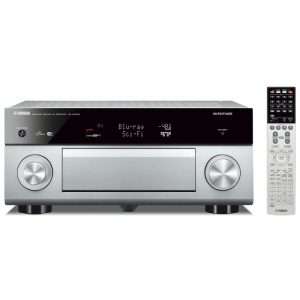 Yamaha RX-A 3040 TITAN | 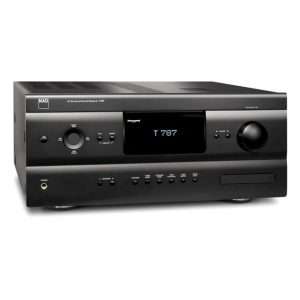 NAD-T787 |





